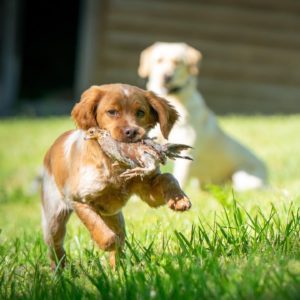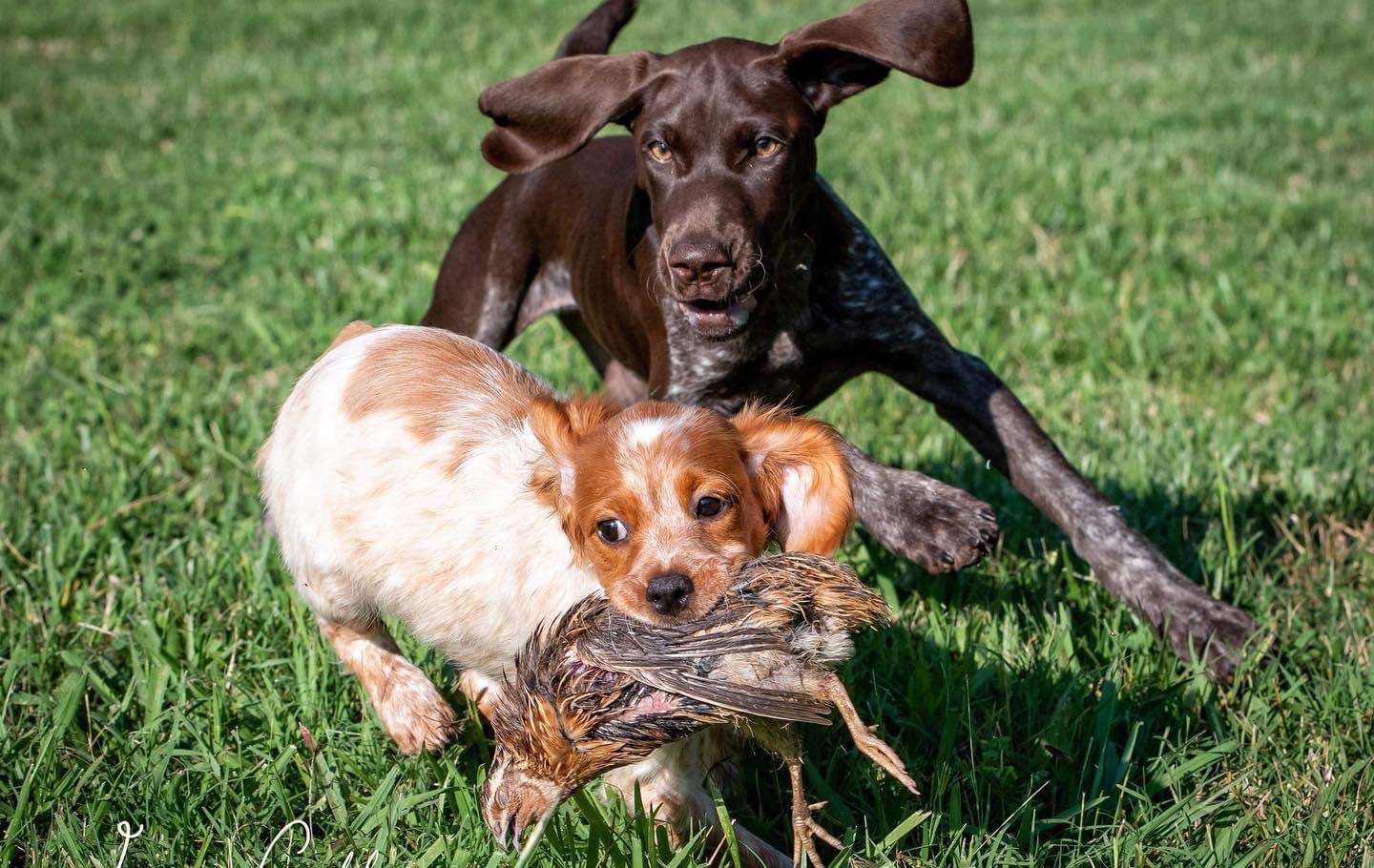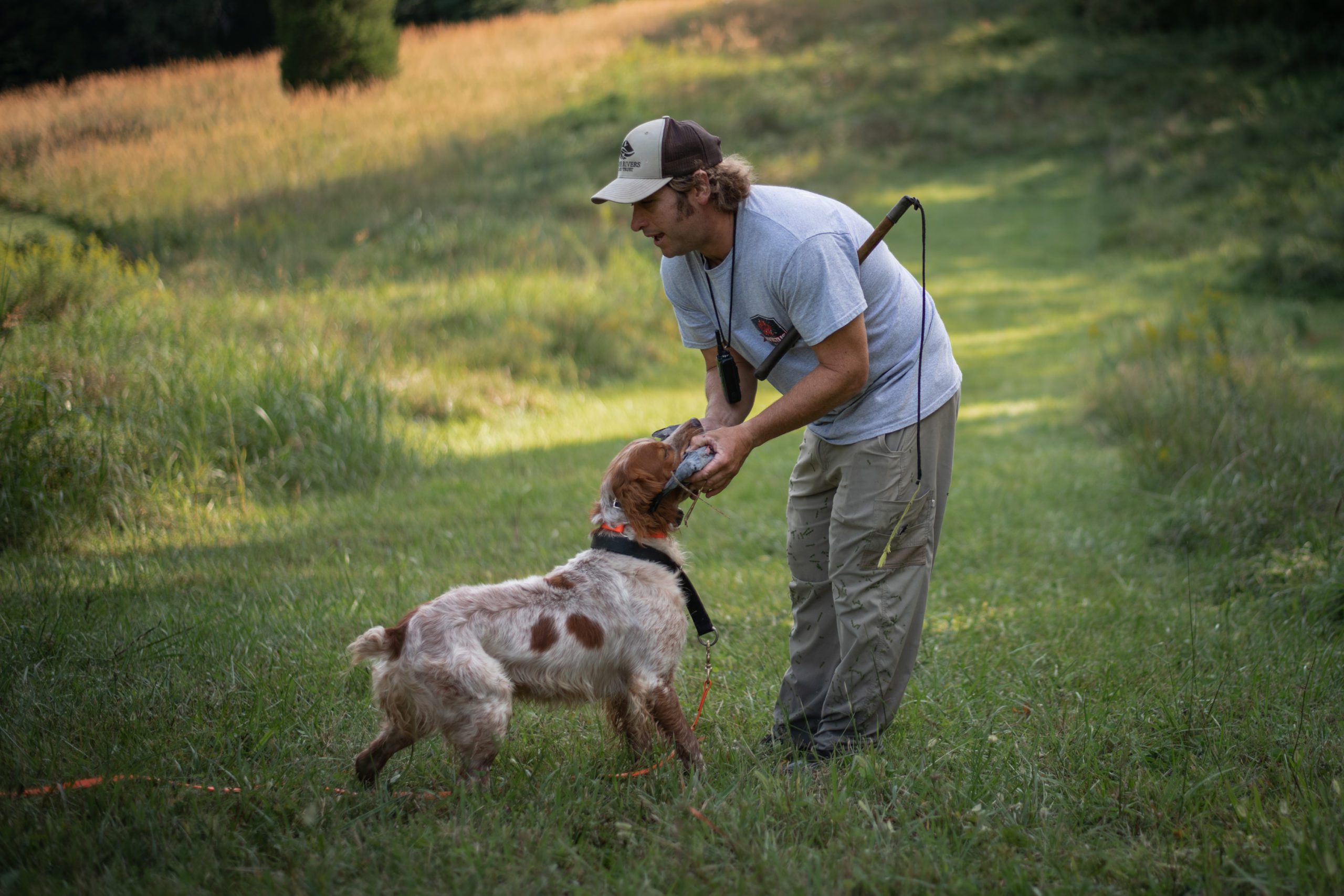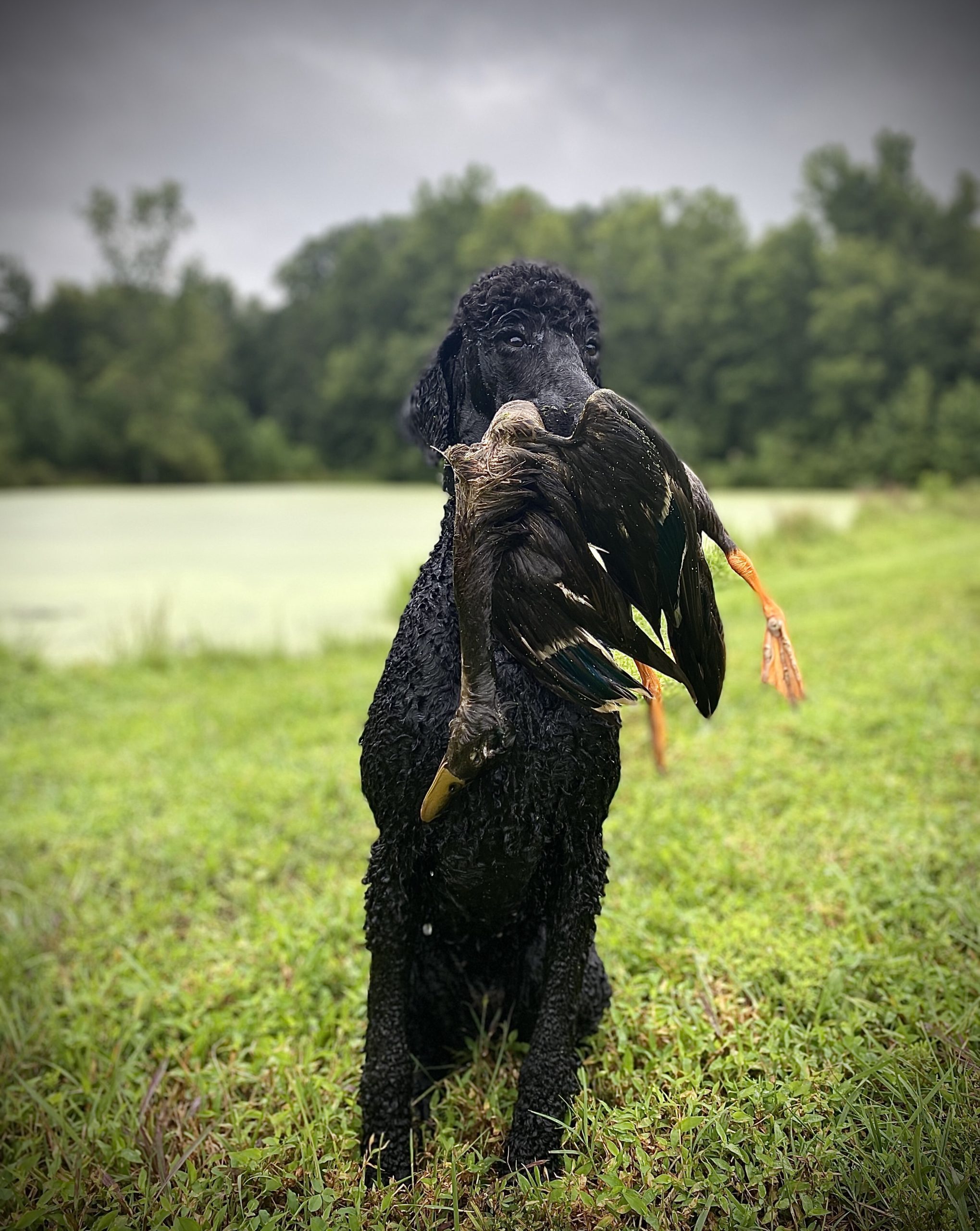Hello, and thank you for being here (my website). I assume that if you’re reading this you are considering sending your dog to me for training. It’s important that you know that the health and wellbeing of your dog are my top priorities and I’m grateful and honored to be entrusted with this responsibility. It is not something I take lightly.
Though I have a few experienced gundog owners that bring dogs to me at various stages of training, most of my first time clients are new to hunting dogs, or at least do not consider themselves experienced or proficient trainers. I am of the belief that a well trained gundog needs an effective handler to meet even a bit of its potential in the field. In other words, this won’t work if you’re not committed to learning how to handle your dog. Don’t let this scare you, it can be pretty simple and intuitive, but you must practice.
We take three basic types of gundogs here, pointing breeds, flushing breeds, and retrieving breeds. For the sake of clarity I’ll use the term questing dog to refer to both pointers and flushers and retriever to refer to, well retrievers. Today we will be discussing the questing dogs. We will cover early stages of retriever training in the future. Questing dog is a term I’ve borrowed from Craig Koshyk. I find it very useful in organizing my thoughts around the development of various training programs. Though pointers and flushers have very different ways of helping us bring game to the bag, the way in which they approach the search is very similar. This means that they can be treated very similarly in the earliest stages of training.
Questing Dogs:
For questing type dogs, practice simply means getting afield with your dog and developing a connection without being obtrusive. Young questing dogs need to “go with you” while independently searching for game. What happens when they contact game is between them and their quarry. I sincerely believe that we must let our young dogs develop naturally before we try to add any “bird manners”. A questing dog that leaves here after a normal young dog stay will be exposed to birds and gunfire, trained to recall on cue, and will “go with us” in the field. The idea is to give them the opportunity to become the absolute best natural version of a bird dog possible. I want to send a first year bird dog home with you in such a way that it is safe for you to hang your gun over your shoulder, take them afield, and shoot some birds out to them if they earn it.
The ideal situation would be to get your 7-12 month old pup here before their first true hunting season. The average stay for a first year questing dog is around six weeks. Here is an approximate breakdown of a week by week schedule for a first year dog in training. Obviously, if you have a flushing dog, you can disregard any of the pointing dog language. This schedule only accounts for field work. If your dog is here for Companion Gundog work, the he or she will be getting more refined obedience when away from the field.
Week 1:
-Receive owner and dog on drop off day.
-24 – 72 hours of settle/decompression time (dog will be walked on lead in the yard when out)
-Structured play
-Intro to collar conditioning
Week 2:
-Structured play and collar conditioning continued
-Call owner for initial assessment and update
Week 3:
-Collar conditioning continued
-Free runs around grounds solo and with other dogs
-Intro to birds
-Bump, chase, catch bird contacts during free runs
Week 4:
-Bump, chase, catch bird contacts continued
-Assess natural retrieve (if any)
-Bump, chase (no catch) contacts
-Intro to gunfire
-Assess natural point
-Contact owner with mid-term assessment and update
Week 5:
-Bump, chase, distant gunfire (sensitivity dependent)
-If staunch… Launcher intro
-Begin to close the distance pre-flush (walking in to flush)
-Begin shooting birds out for dog if ready
Week 6:
-Extend staunch point with launcher (shoot kill pigeon out for the dog as needed)
-Test on hard flying loose quail
-Repeat as needed
-Turnover

You’ll notice that I never said anything about limiting the chase of your young dog. I’m a believer in leaving the chase in a young dog until they’ve got some experience under their belt. This helps ensure that we give the best opportunity to start more compulsive field training as the most bold, confident young gundog they can be. Not everyone agrees with this notion, but it is something that is very important to me. If you’re looking to have your young dog “broke out” in his/her first season, I’m likely not the trainer for you.
If all you want is a “meat dog”, you may never need any training beyond this first year exposure program. If you decide you’d like to add some polish before the next season or that you want to take your dog to a more finished level of training, I’ll be here to help you achieve those goals in the future. For now, let’s make you a good young hunting dog that will come out of his/her first season strong, confident, and ready for whatever we throw at him.




